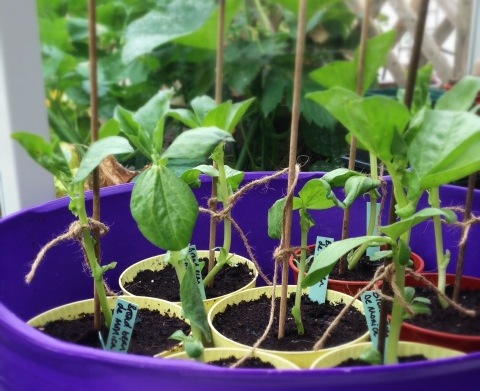In her Pottering in the potting shed series, our garden editor Cinead McTernan, shares ideas for things to do in your plot. This month, try planting wasabi.
"OK - first of all I should be clear that growing wasabi requires a bit of patience! Just like asparagus or rhubarb where you need to wait at least until the second year to really get a bumper crop, you have to wait for at least 18 months to harvest the tuber. However, it's worth the wait - the taste of genuine wasabi is far more firey and complex than the shop-bought lurid green wasabi paste (which is actually a mix of mustard and horseradish... and colouring!). If you can't wait that long, in the first year you can pick a few of the spring flowers and make a tempura with them as well as harvesting a few leaves of the wasabi, using them to add a kick to salads or, as Suttons Seeds suggests, wrap them around smoked salmon or cream cheese. The flavour isn't as strong as the tuber but it's sill delicious.
To grow...
Perfect for our climate, wasabi is most happy in overcast, damp chilly weather so make sure you can find it a shady spot. I planted a tuber in a container this time last year and overwintered it in a sheltered corner of the garden under a table - it's looking incredibly healthy already with a glossy clump of heart-shaped leaves showing all the promise of a big, juicy tuber that I'll harvest at the end of the growing season.
You can buy plants from The Wasabi Company or Suttons Seeds. Plant the tuber in a 9cm pot and when it's had chance to get established, about 6 weeks later, plant out in a larger container (I went for a 40cmx40cm) or in a shady spot in the border or by the edge of a pond with other marginal plants and keep well-watered. Given its preferred growing site, I was vigilant about slugs and snails - they seemed to get a taste for it and the only answer was a night-time visit to pick them off!
Once it comes to harvesting, pull out the entire plant and remove the leaves from the rhizome. Give it a wash and you can then keep it, wrapped in damp tissue in the fridge until you're ready to use it."
Words: Cinead McTernan
More from Cinead's Pottering in the potting shed series




